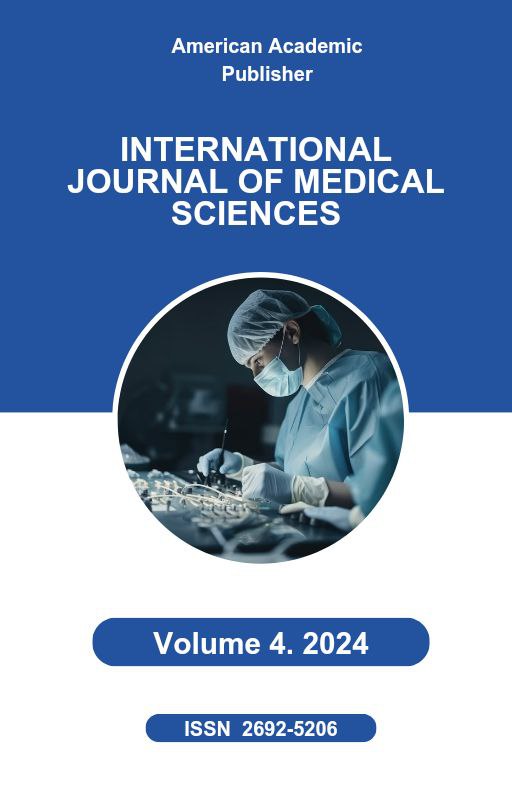 Articles
| Open Access |
https://doi.org/10.55640/
Articles
| Open Access |
https://doi.org/10.55640/
EMOTIONAL BURNOUT AMONG TEACHERS
Pulatov S.S. , Assistant of the Department of Rehabilitology, Sports Medicine, Traditional Medicine and Physical Education. Andijan State Medical Institute Andijan, Republic of UzbekistanAbstract
Emotional burnout syndrome (EBS) is a growing occupational health and social problem in the teaching profession. This article explores the historical background, theoretical models, epidemiological patterns, and social implications of burnout among teachers. International studies indicate that 40–60% of teachers experience symptoms of emotional exhaustion, while nearly one third show depersonalization and reduced professional accomplishment. The COVID-19 pandemic further intensified burnout due to increased workload and the shift to online teaching.
The findings reveal that professional overload, constant emotional labor, insufficient recognition, and lack of institutional support are major risk factors. Burnout leads to negative outcomes at the individual level, such as psychosomatic disorders and depression, as well as at the professional and societal levels, including reduced teaching quality, teacher attrition, and loss of trust in education.
The article emphasizes the urgent need for comprehensive preventive measures. Prioritizing teacher well-being through institutional support, governmental reforms, and international best practices is essential for sustaining education quality and national development.
Keywords
emotional burnout; teachers; occupational stress; professional exhaustion; education system; depersonalization; emotional exhaustion; reduced personal accomplishment; teacher health; psychosomatic consequences; mental health; workload; educational reforms; stress management; teacher well-being.
References
Maslach C., Leiter M. P. Understanding the burnout experience: recent research and its implications for psychiatry // World Psychiatry. – 2016. – Vol. 15, No. 2. – P. 103–111.
Freudenberger H. J. Staff Burn-Out // Journal of Social Issues. – 1974. – Vol. 30, No. 1. – P. 159–165.
Schwab R. Burnout in education // Educational Research Quarterly. – 1982. – Vol. 7, No. 2. – P. 26–38.
Maslach C., Jackson S. E., Leiter M. P. Maslach Burnout Inventory Manual. – 3rd ed. – Palo Alto: Consulting Psychologists Press, 1996. – 52 p.
Pines A., Aronson E. Career burnout: Causes and cures. – New York: Free Press, 1988. – 256 p.
Schaufeli W. B., Buunk B. P. Burnout: An overview of 25 years of research and theorizing // The Handbook of Work and Health Psychology. – Wiley, 2003. – P. 383–425.
World Health Organization. ICD-11 for Mortality and Morbidity Statistics. – Geneva: WHO, 2019.
Chirico F., Ferrari G., Nucera G., Szarpak L. Prevalence and risk factors of burnout syndrome among schoolteachers in Europe: a systematic review // Int. J. Environ. Res. Public Health. – 2021. – Vol. 18, No. 13. – 6791. doi:10.3390/ijerph18136791.
Hakanen J. J., Bakker A. B. Burnout and work engagement among teachers // Journal of School Psychology. – 2017. – Vol. 45, No. 6. – P. 495–512.
Ingersoll R. Teacher turnover and teacher shortages: An organizational analysis // American Educational Research Journal. – 2001. – Vol. 38, No. 3. – P. 499–534.
Shen X., Yang Y. Teacher burnout in China: a national survey // China Education Review. – 2019. – Vol. 45, No. 2. – P. 44–57.
Kim J., Lee Y. Teacher stress and burnout in South Korea // Asia Pacific Educ Rev. – 2020. – Vol. 21, No. 3. – P. 345–359.
Pressley T. Factors contributing to teacher burnout during COVID-19 // Educational Researcher. – 2021. – Vol. 50, No. 5. – P. 325–327.
Sokal L., Trudel L. G., Babb J. Supporting teachers in online learning during COVID-19: Challenges and perspectives // Canadian Journal of Education. – 2020. – Vol. 43, No. 3. – P. 1–33.
Babanov A. S. Professional factors and stress: emotional burnout syndrome // Trudnyy Patsient. – 2009. – No. 12. – P. 7–10.
Ovchinnikov Y. V. Emotional burnout syndrome: diagnostics, treatment principles, prevention // Military Medical Journal. – 2015. – No. 7. – P. 17–24.
Kyriacou C. Teacher stress and burnout: international perspectives // Educational Review. – 2001. – Vol. 53, No. 1. – P. 27–35.
Skaalvik E. M., Skaalvik S. Teacher burnout: relations between dimensions of burnout, perceived school context, and teacher satisfaction // Teaching and Teacher Education. – 2017. – Vol. 67. – P. 152–160.
Collie R. J., Shapka J. D., Perry N. E. School climate and teachers’ occupational well-being // Journal of Educational Psychology. – 2012. – Vol. 104, No. 4. – P. 1189–1204.
OECD. TALIS 2018 Results: Teachers and School Leaders as Lifelong Learners. – Paris: OECD Publishing, 2019. – 320 p.
Montgomery C., Rupp A. Professional burnout: Teaching in higher education // Higher Education Quarterly. – 2005. – Vol. 59, No. 3. – P. 297–314.
Johnson S., Cooper C. Work-related stress in teachers: A review and meta-analysis // Journal of Occupational Psychology. – 2016. – Vol. 89, No. 2. – P. 234–256.
Lee J. Teacher working conditions and burnout in South Korea // International Journal of Educational Development. – 2019. – Vol. 65. – P. 178–186.
UNESCO. Global Education Monitoring Report 2020: Inclusion and education – All means all. – Paris: UNESCO, 2020. – 472 p.
Article Statistics
Downloads
Copyright License

This work is licensed under a Creative Commons Attribution 4.0 International License.

